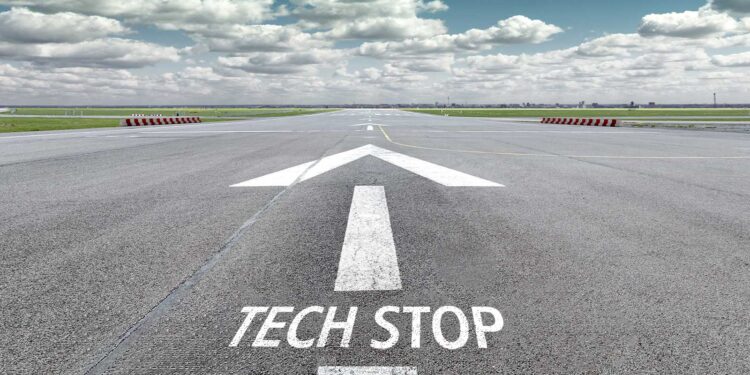International Tech Stops – Part 2: Permits & Operating Tips

This business aviation blog post continues from our article last week, entitled “International Tech Stops – Part 1: Clearance and Landing Considerations.”
In addition to considering all required permits for your trip, there are many additional considerations to be mindful of when planning international tech stops. Some locations are easier and more straight-forward than others in terms of local requirements.
1. Landing permits
In almost every international location requiring landing permits, procedural and documentation requirements are no different for destination or tech stops. There are certain locations, however, where permit lead times may be shorter for tech stops as opposed to destination stops. For tech stops in India one business day lead time is usually the minimum requirement and three days is recommended. For destination stops to India, however, the minimum requirement is three business days prior notice but it’s recommended that five days’ notice is provided for destination stops. Some international locations require longer lead times than others for landing permits and this impacts fuel uplift options and choices. If you need to tech stop in Indonesia but are not able to comply with official lead times which is five days’ notice, consider changing your fuel uplift to Singapore (WSSS) as landing permits are not needed for Singapore. Be mindful that landing permits are not required for short stays of up to 48 hours in Colombia and up to 72 hours in Ecuador and Venezuela.
2. Luggage screening
For most international tech stops there’s generally no requirement to offload luggage for screening. This, of course, depends upon the location. For example, if you’re making an international tech stop at either San Juan (TJSJ) or Aguadilla (TJBQ), crew and passenger luggage must always be offloaded and inspected.
3. Traveling with guns and pets
For international tech stops most countries require firearms and ammunition to be pre-declared. Airport authorities may require a letter from the operator providing gun information and serial numbers along with a statement to the effect that guns and ammunition will remain onboard during the stop. When traveling with pets it’s important to be aware of local requirements associated with all tech stops. In most cases, if the animal has current vaccination paperwork and/or a health record micro-chip and does not exit the aircraft at the destination, it’s not an issue tech stopping with onboard pets.
4. Vaccination, quarantine and controlled items
Depending upon your destination there may be requirements to spray the cabin with an approved insecticide prior to landing. This is typically done at top of descent. This procedure should be noted on your gen dec and proof given (usually an empty spay can) to the local quarantine inspector upon landing. Yellow fever inoculations, at least 10 days prior to arrival, are mandated for several international destinations in Africa, South America and elsewhere. It’s important for passengers and crew to have required inoculations up-to-date and carry proper evidence of this. While inoculation mandates often do not apply to tech stops, your next destination may want to see proof of vaccination, depending upon where you’re arriving from. Operators carrying weapons, ammunition or endangered species should fully declare this prior to making any tech stop.
5. Tech stop tips
Airport overtime is possible at many popular tech stop locations. St Lucia (TLPL), Suva (NFNA) and Georgetown (MWCR) are examples of airports where overtime is usually possible after published airport hours with prior arrangement. When planning tech stops in Mexico, arriving from the south, the Caribbean or Bermuda, operators must land first at either Cozumel (MMCZ) or Tapachula (MMTP) to comply with national security clearance mandates.
6. Tech stop alternates
Depending on the time of year, weather patterns, and other incidentals, it’s recommended that operators always have alternate locations to consider for tech stops. It’s important to note that depending on the region you are traveling in, permits and other considerations such as airport slots should be considered prior to the day of operation. There are times that due to restrictions in the area, delays for departure may occur until the needed permissions have been obtained. Also, there areas where the alternate is hundreds of miles away and changes to the schedule may be needed in order to ensure that there are good alternatives in case it’s needed. It’s always recommended that operators speak to their 3rd-party provider to determine best route options and alternate schedules in the event changes need to be made.
Conclusion
It’s always recommended to have contingency plans in place in the event permit lead times become an issue or you need to change tech stop locations on short notice. Your 3rd-party provider can suggest preferred tech stops as well as tech stops that may be best avoided.
Questions?
If you have any questions about this article or would like assistance planning your next trip, contact me at shawnleavell@univ-wea.com.




